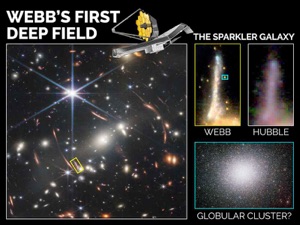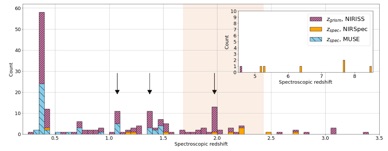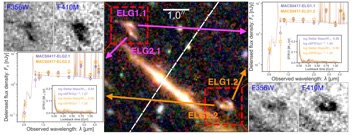



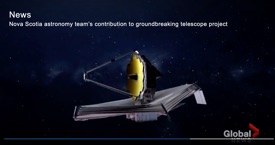



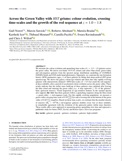
You can see the preprint of the paper on arXiv (here) and - soon - in MNRAS. Next up: we will be doing this but at higher redshifts and with the much more sensitive JWST NIRISS grisms (rather than HST, as in this paper)!

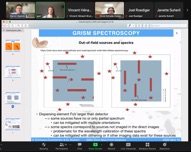
If you missed the talk, a recording is available here.

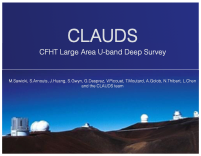


Katherine Myers and Lukas Donovan will be working on galaxy-evolution projects related to upcoming JWST data as NSERC USRA summer students (welcome to the team, Katherine and Lukas -- and congratulations on winning the prestigious USRA awards!).
Meanwhile, former group member Dr. Robert Sorba is rejoining for the summer to spearhead our work related to the planned CASTOR space telescope. CASTOR is the #1 priority for Canadian space astronomy and is now starting its Phase-0 development stage funded by the Canadian Space Agency.

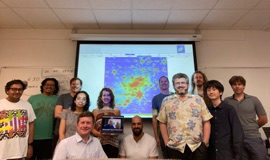

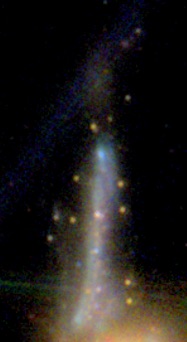
Our paper describes the discovery of what we believe to be old globular clusters in a spectacular-looking very distant galaxy that we call "The Sparkler". Our own home galaxy, the Milky Way, hosts about 150 globular clusters, which are clumps of old stars that orbit the galaxy and that are believed to be the oldest, first-to-form bits of our galaxy. No-one can tell for sure how old these globular clusters in the Milky Way are (decades of work have told us that they are really old, but the precise ages have been elusive). However, knowing their exact age would tell us a lot about when and how our home Galaxy was born.
The significance of our discovery of old globular clusters in The Sparkler, whose light was emitted 9 billion years ago (when the Universe was just 1/3rd of its current age), is that we are able to measure its globular clusters’ ages much more precisely than is possible for globular clusters in the Milky Way. Simply put, we observe The Sparkler and its globular clusters much earlier on in their lifetimes than is possible to do for the Milky Way, This gives us a lot more precision in telling what happened in The Sparkler around its time of birth than we can ever do for our own Galaxy.
And so, we find that The Sparkler’s globular clusters were already very old at the time their light left them on its journey to us… in fact, they were already 4 billion years old at that time, which is when the Universe was only about 4.5 billion years old. This means that the globular clusters in The Sparkler must have formed very soon after the Big Bang — when the Universe was only about 500 million years old, or about just 3.5% of its present age. Closer to home, the significance of our discovery is that the Sparkler’s globular clusters are similar to those of our own home Milky Way galaxy, then our home galaxy’s oldest parts must have also started forming very shortly after the Big Bang.



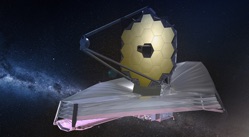
JWST just took the first CANUCS data. Beyond words. Go Webb! Go CANUCS!
(No images from the data that I can share yet, but please admire this beautiful NASA artist’s impression of JWST in flight in the meantime)

